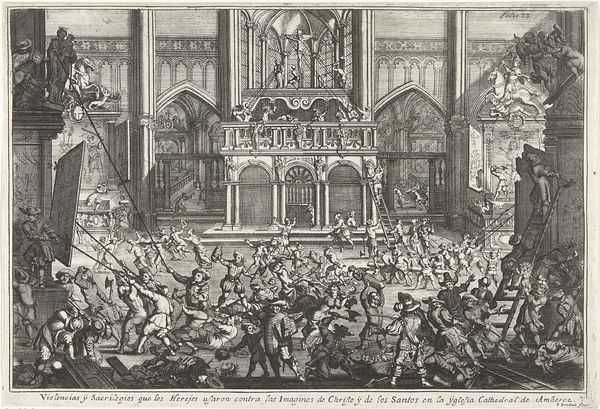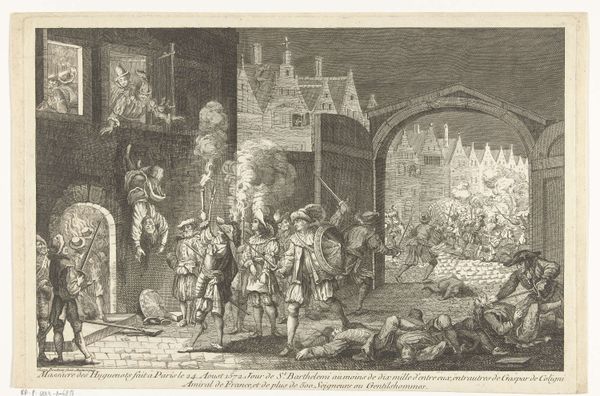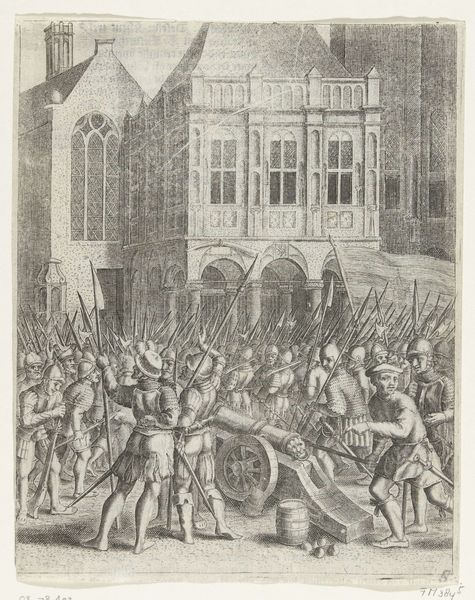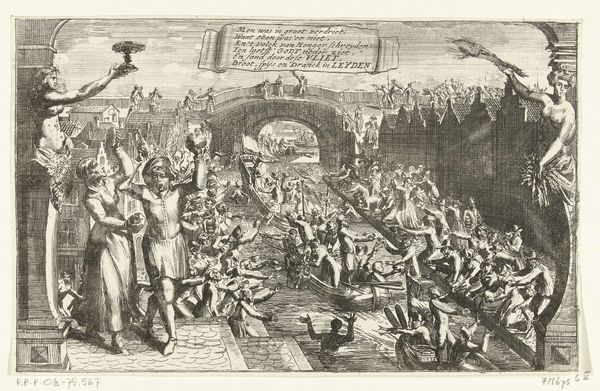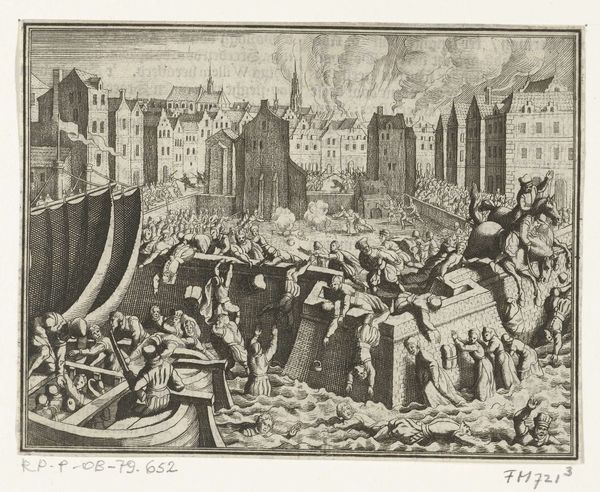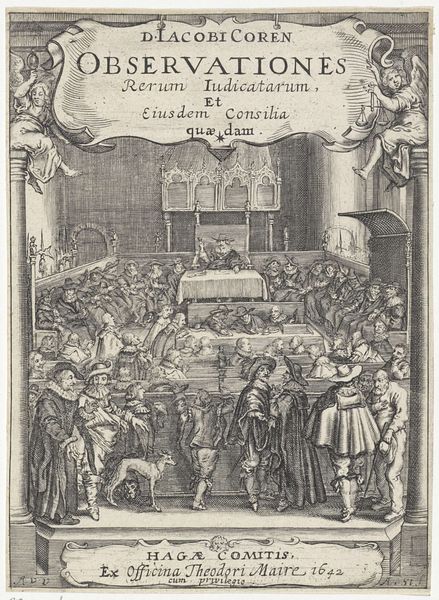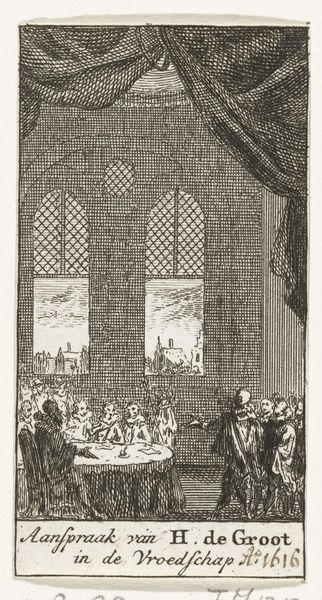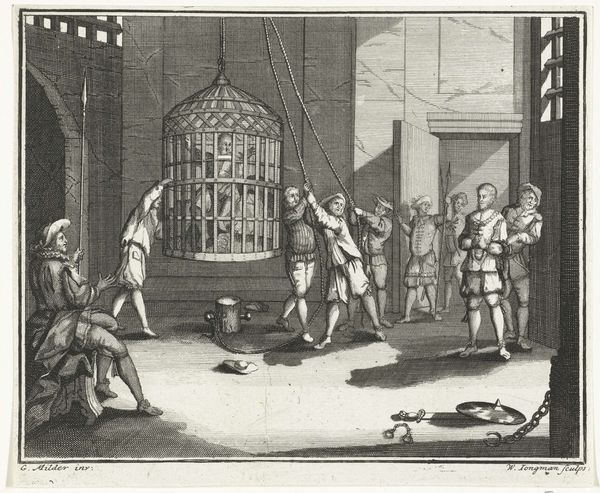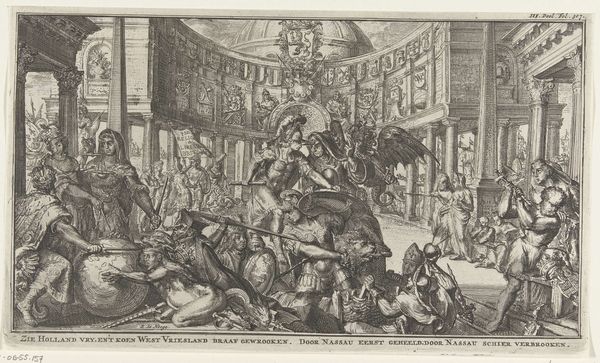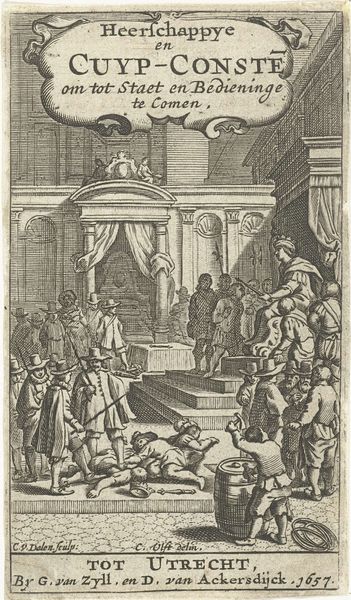
Beeldenstorm in de Onze-Lieve-Vrouwekathedraal te Antwerpen, 1566 17th century
0:00
0:00
anonymous
Rijksmuseum
print, engraving
#
medieval
#
pen drawing
# print
#
genre-painting
#
history-painting
#
northern-renaissance
#
engraving
Dimensions: height 165 mm, width 203 mm
Copyright: Rijks Museum: Open Domain
Editor: Okay, so this print, “Beeldenstorm in de Onze-Lieve-Vrouwekathedraal te Antwerpen, 1566,” from the 17th century by an anonymous artist, depicts a very chaotic scene. It feels incredibly turbulent, with all these figures tearing down religious imagery. What can you tell me about it? Art Historian: Well, as an iconographer, the broken imagery here is incredibly evocative. Notice how the figures attack symbols of power - crucifixes, statues. Consider what these objects represented to the people before their destruction and what their destruction signified? Editor: You mean, like, the toppling of not just a religious figure, but a whole belief system? Art Historian: Precisely! These are not merely objects; they represent centuries of cultural memory. This “Beeldenstorm,” or iconoclasm, as its often referred to, speaks volumes about shifting power dynamics. It occurred during the Reformation, when religious beliefs were in upheaval. Do you see how the artist captures the frenzy, the sheer force of iconoclasm? What do you make of the artist's decision to depict this historical event through printmaking? Editor: It makes it feel…widely disseminated, like propaganda, almost? Able to reach many more people than a painting hung in a church. Art Historian: An excellent point! The engraving allows for reproduction, broadening the impact of the scene and solidifying cultural memory around it. Are these destroyers of imagery heroes, villains, or something in between? Editor: I guess that depends on your perspective, right? This piece makes me realize how much images *mean,* that they aren't just decorations. Art Historian: Exactly. The intentional destruction of images, like here, proves their inherent power as more than mere objects of worship or beauty. They become powerful conduits of complex beliefs.
Comments
No comments
Be the first to comment and join the conversation on the ultimate creative platform.
